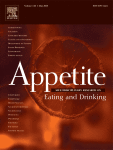New paper: The influence of peers′ and siblings′ on children’s and adolescents′ healthy eating behavior

Eating together with friends is not always good for children and adolescents. Eating together with siblings is still an obscure field.
Tija Rageliene (ESR9) recently published her first paper in “Appetite” (open access). A summary of the paper is given below
Childhood obesity and overweight are rapidly increasing worldwide becoming one of the major public health problems for nowadays society. Previous research has shown that childhood obesity tends to continue into adulthood and is linked with many serious non-communicable diseases such as hypertension, diabetes and cardiovascular diseases. One of the major risk factors of obesity is an unhealthy diet, which could be easily modified by changing children’s eating habits. Therefore, it is important to understand the determinants of children’s healthy eating to hinder the spread of childhood obesity.
Besides parents, children have a lot of social interactions with friends and siblings in their everyday lives. Influence of peers and siblings for children food choice was found to be important in previous research. In our study, we aimed to summarize peers and siblings influence on children’s and adolescent’s eating behaviour. In total 29 studies were systematically included in our review.
The results of our study revealed that peers’ influence on children’s and adolescents’ healthy eating behaviour more often is negative than positive. Peers’ support for unhealthy eating, peers’ liking and friends’ consumption of energy-dense and low-nutrition value foods, for example, such as candies or cookies, were found to be related with increased unhealthy food consumption among children and adolescents. Since it was discovered that children share similar eating patterns with their friends and adolescents tend to consume more “junk food” while eating together with peers. Siblings impact on children’s and adolescent’s eating behaviour is unclear since siblings were only mentioned in 4 studies, where the contradictory findings were presented. This indicates that studies exploring siblings’ impact on children’s and adolescents’ eating behaviour are scarce and further research is needed in this area, as well as studies that could explain what factors related with children’s and adolescent’s relationship with peers and siblings could determine the direction of social influence on children’s eating behaviour. Factors defining quality of social relationships with peers and siblings might be used in explaining peers’ and siblings’ impact on children’s eating habits.

friendship, people, pajama party and junk food concept – happy friends or teenage girls eating pizza at home

Joyful young people enjoying time together eating pizza outdoors, friendship
eating behaviour, ESR9, peer and sibling influence, review

